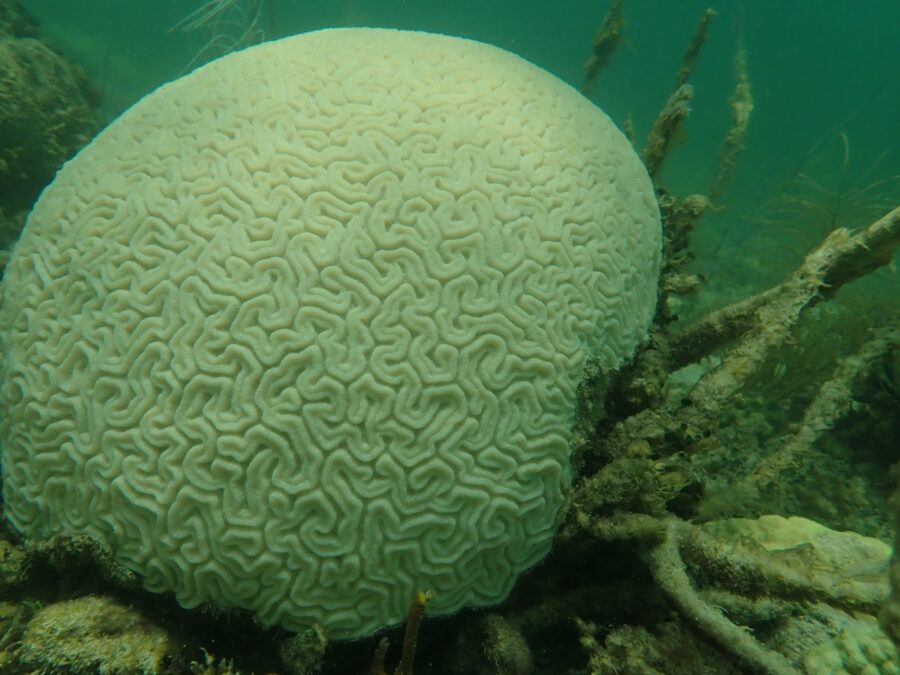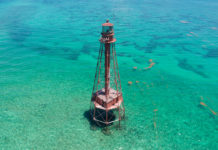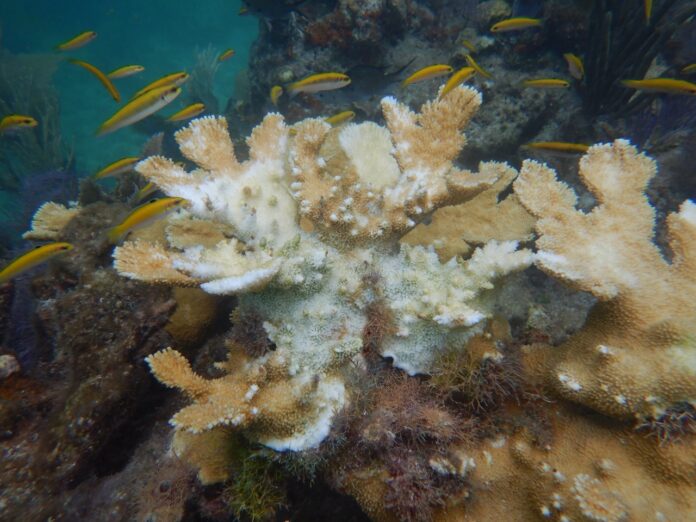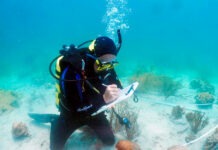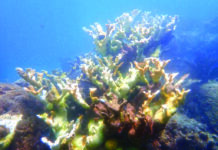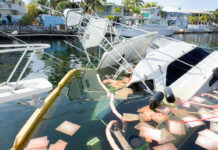Florida’s Coral Reef is a national treasure spanning more than 350 miles from Martin County to the Dry Tortugas. It supports an amazing diversity of marine life and wildlife, offers abundant ecosystem services and is a driving force in South Florida’s economy.
According to Florida Keys National Marine Sanctuary, coral reefs in southeast Florida have a total economic value of about $8.5 billion. Florida’s coral reef-related expenditures are $4.4 billion per year. The reef supports 81,300 jobs and protects real estate and economic activity worth $675 million per year.
While coral reef ecosystems are extremely valuable, there has been a declining long-term trend in coral cover, accelerating in the last 40 years.
There have been eight regional bleaching events in the Florida Keys since 1987. During the marine heat wave of summer 2023, the Keys and Dry Tortugas experienced the worst coral bleaching ever recorded. Unusually hot waters started mid-July, a month earlier than the peak heating months of late August and September. Water temperatures were about 5 degrees hotter than normal, with temperatures on some reefs reaching up to 93°F. Last year’s marine heat wave was particularly pronounced due to early season high water temperatures exacerbated by El Niño conditions, local meteorological conditions and ongoing climate changes. This resulted in rapid and severe bleaching, surpassing previous records.
Coral bleaching can begin when water temperatures are above 87°F. Summer 2023 was devastating because it was the first time water temperatures surpassed bleaching thresholds in mid-July, taking until October to cool down, except for a small dip due to Hurricane Idalia. Our corals spent almost double the time in abnormally hot temperatures compared to any of the previous bleaching years in Florida.
Corals are animals in a mutually beneficial relationship with microscopic algae that live within their tissues. The microalgae have a safe place to live among the corals, while the corals receive sugars and amino acids from the microalgae. Corals get around 90% of their nutrition from this relationship, while the remaining amount is received from plankton captured with their tentacles. The microalgae also give corals their color.
Thermal stress events cause the microalgae to expel from the coral’s tissue and expose the white skeleton underneath. This is called “coral bleaching.” The average American consumes about 2,000 calories per day. Imagine if suddenly your diet was cut by 90% to only 200 calories per day. You could live on 200 calories per day, but for how long?
Coral bleaching may be very severe on a portion of the reef while other nearby corals may fare well. Local weather conditions, oceanographic features, coral species and other variables such as water depth, currents, turbidity and even the color of a coral may give an advantage to survive in higher-than-average thermal conditions. Cloud cover and choppy waters limit the intensity of solar radiation and help oxygenate the water.
In 2023, the most severe coral bleaching took place from Biscayne Bay to the Dry Tortugas. Northern areas of the reef tract in Martin, Palm Beach and Broward counties did well. Some places saw localized stony coral bleaching while it was widespread in others. Soft corals like the sea fans, sea whips and sea plumes had very high rates of mortality and people noted the upside-down jellyfish Cassiopea looked like bleached snowflakes on the sea floor. Unfortunately, there were also massive sponge die-offs in the Lower Keys backcountry.
You can help report disease and bleaching conditions on the reefs by documenting what you see at the Florida Department of Environmental Protection SEAFAN.net website. Personal observations and photos can be uploaded using the “Report a Marine Incident,” including a feature to mark latitude and longitude. Documenting no bleaching is just as important for Florida coral reef managers.
